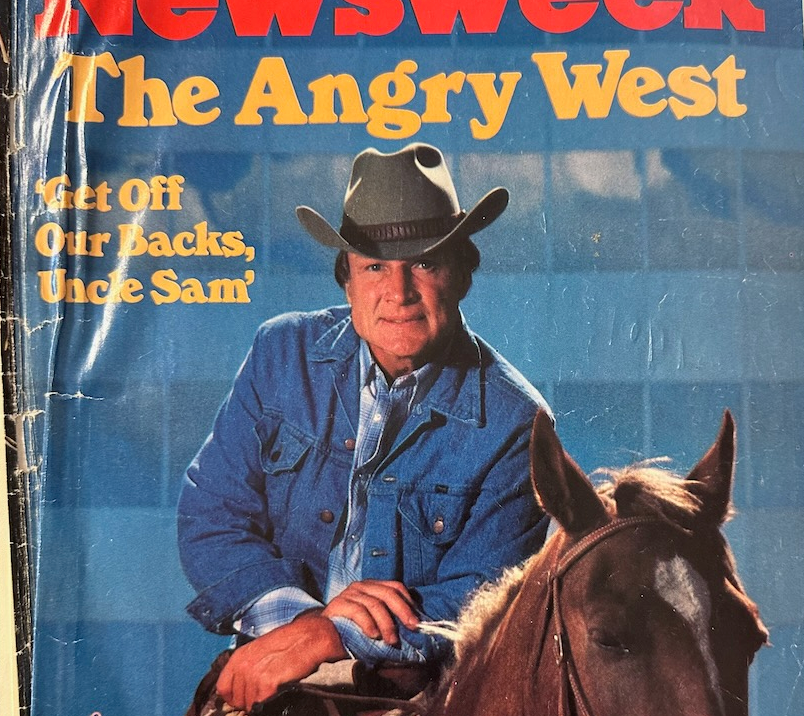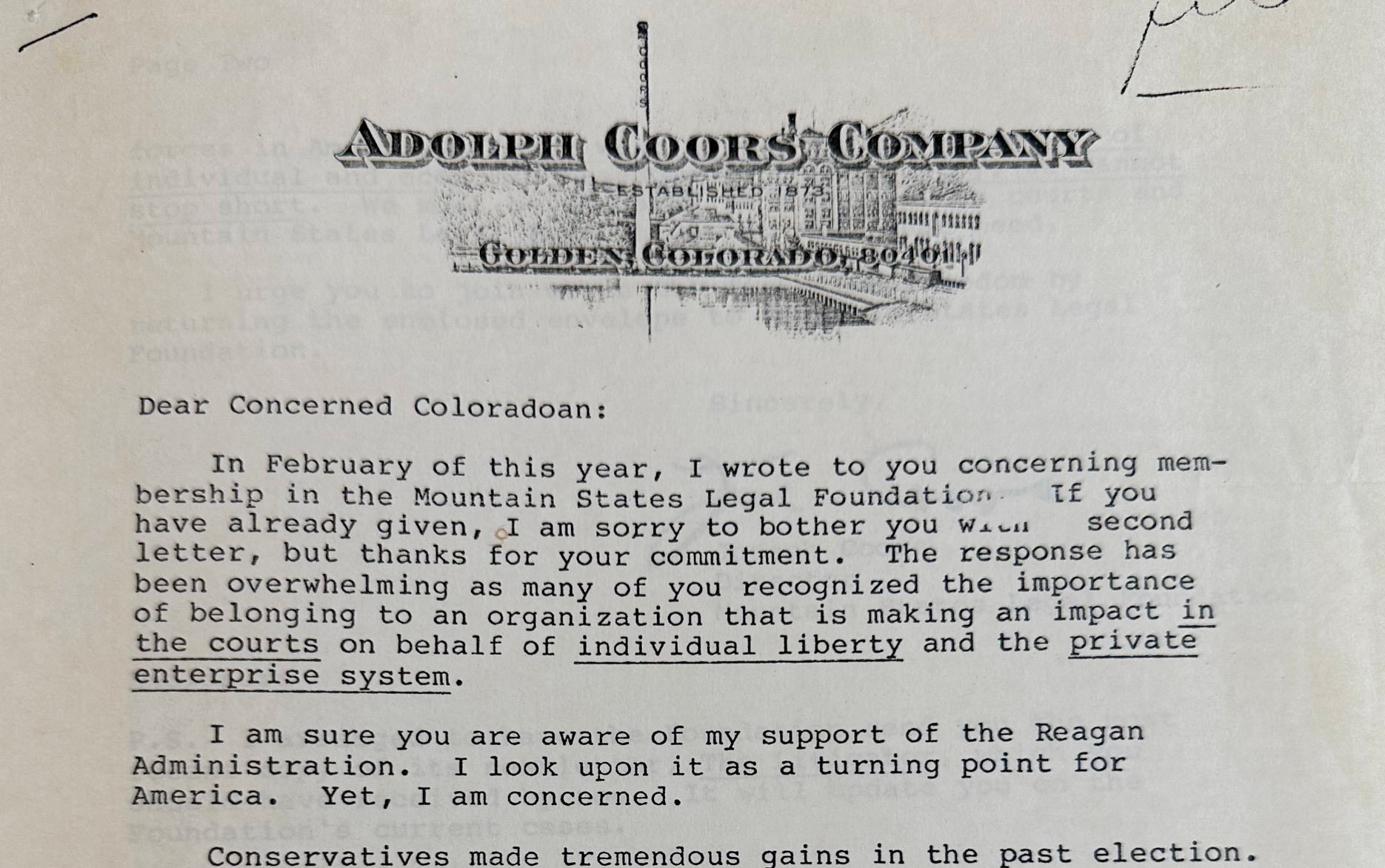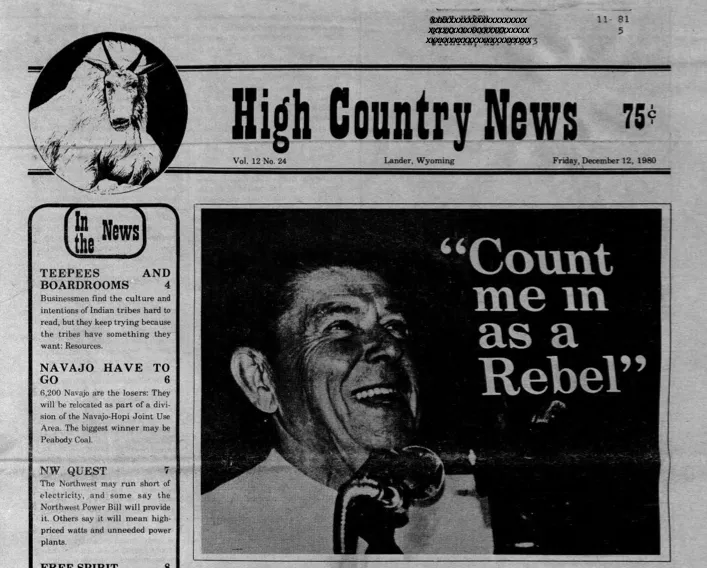The GOP Has Tried to Sell Public Lands for Fifty Years

Spend any amount of time among hunting, recreation, or agriculture communities right now and you'll be confronted with countless urgings to contact your Congressperson to protect the federal lands. The public lands, primarily thanks to Utah Senator Mike Lee, are once again at threat of being sold as part of the budget bill. This time, according to the Wilderness Society, a total of 250 million acres could be put up for sale.
Call your senators and demand that they protect the public lands. And while you're doing that, here's some background history around the public lands and the Republican Party's interest in disposing them to private hands.
A Short History of the Long History of Land Disposal
I just returned from a research trip to the American Heritage Center in Laramie, Wyoming, to go through a number of archival records relating to the Sagebrush Rebellion and its precursors for the next book I'm writing. Let's talk about a few of the things I'm looking at and thinking about.
The efforts to privatize the public lands are not new. As early as 1952, the Republican Party platform urged a "restoration to the States of their rights to all lands and resources beneath navigable inland and offshore waters within their historic boundaries" that would provide an "opportunity for ownership by citizens to promote the highest land use." The property rights and economic value of the land has remained a principle view among GOP policymakers over the past fifty years. This view, however, become ever more strident after the passage of the Federal Land Policy and Management Act of 1976. Ranchers, farmers, and other commodity users of the public lands especially chaffed at the policy's declaration that the lands would "be retained in federal ownership." No longer would that land be available for single use, or so it seemed; the federal government, now seemingly in league with environmentalists, appeared poised to make the final decision about their economic livelihoods. Reductions in grazing permits in the 1950s and increases in grazing fees throughout this period had already generated tensions among Western ranchers and federal policymakers. FLPMA tipped the scale.
The legal and legislative attempts to sell the public lands to private interests coalesced into its most organized effort in the 1970s. This initially centered around the Mountain States Legal Foundation (MSLF), founded in 1977 with funding provided by Joseph Coors and the National Legal Center for the Public Interest. MSLF is a through-line in these efforts: James Watt served as its first president, and later Ronald Reagan's controversial Secretary of the Interior; Gale Norton, a senior attorney, served as Interior Secretary under George H. W. Bush; and William Perry Pendley, Donald Trump's Interior Secretary, was a long-time MSLF president. Their presence at the helm of government policy illustrates the continuity between these early efforts of the 1970s to our present-day.

In 1979, states in the Mountain West sparked the Sagebrush Rebellion: the first major effort to transfer federal lands to state control. That year, the Nevada legislature passed Assembly Bill 413 seeking to challenge federal land ownership by arguing that the federal government never actually acquired ownership from Nevada but only held the land in trust and, thus, the land rightfully belonged to the state. Several states across the American West sought to, or did, pass similar legislation. These state-level efforts were paired with federal legislative efforts, spearheaded by Utah Senator Orrin Hatch who introduced the Western Lands Distribution and Regional Equalization Act in 1979 that sought to transfer 175 million acres of Bureau of Land Management land to the states.
Sound familiar?

The election of Ronald Reagan further galvanized the movement and, seemingly, provided the Rebels with a victory. A fellow westerner, Reagan proudly declared himself a supporter of the Rebellion and, with the nomination of James Watt as Interior Secretary, the Rebels seemed poised to achieve what they desired. Watt, however, did not usher in the wholesale land transfer they expected. Watt instead saw the problem as one of "arrogant management" in the Interior Department, and promised closer collaboration between locals and federal policymakers while rolling back regulatory policies.
The efforts led by Mike Lee are part of a long-time policy outlook. The movement has repeatedly reemerged since the 1970s, with the Wise Use Movement in the 1980s and 1990s, regulatory rollbacks and expanded resource extraction in the 1990s, and a revival of land transfer demands with the Tea Party in the late 2000s. The reelection of Donald Trump is probably the most favorable political conditions for public land disposal since the Reagan administration.